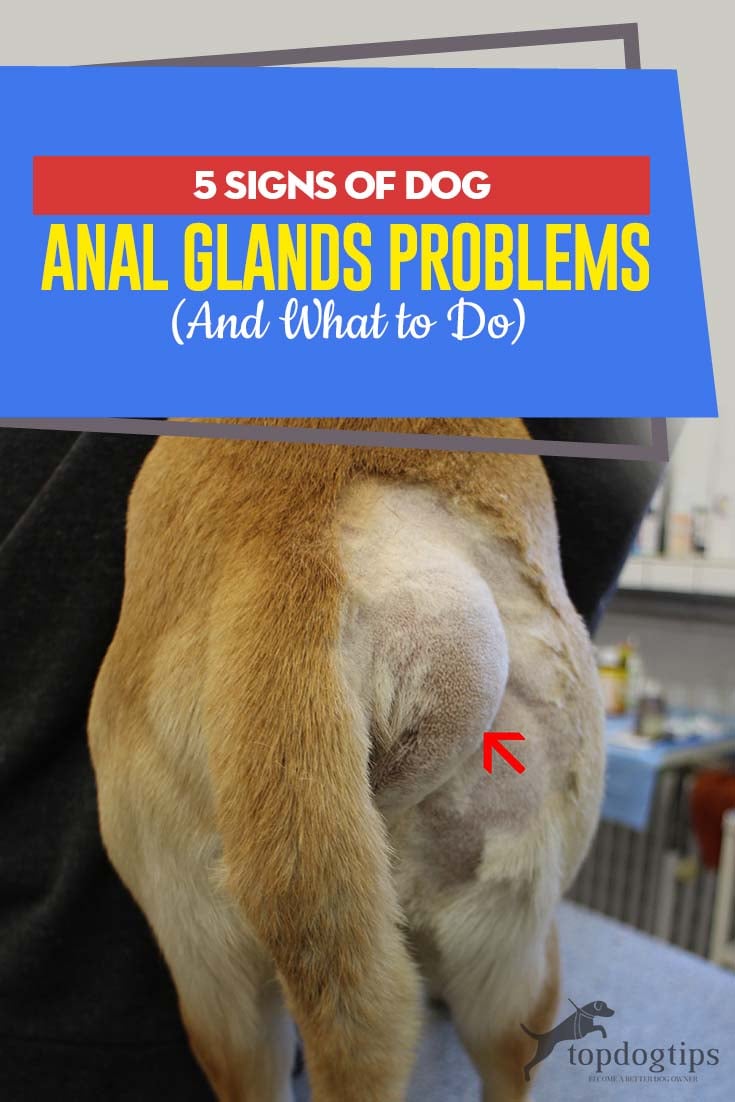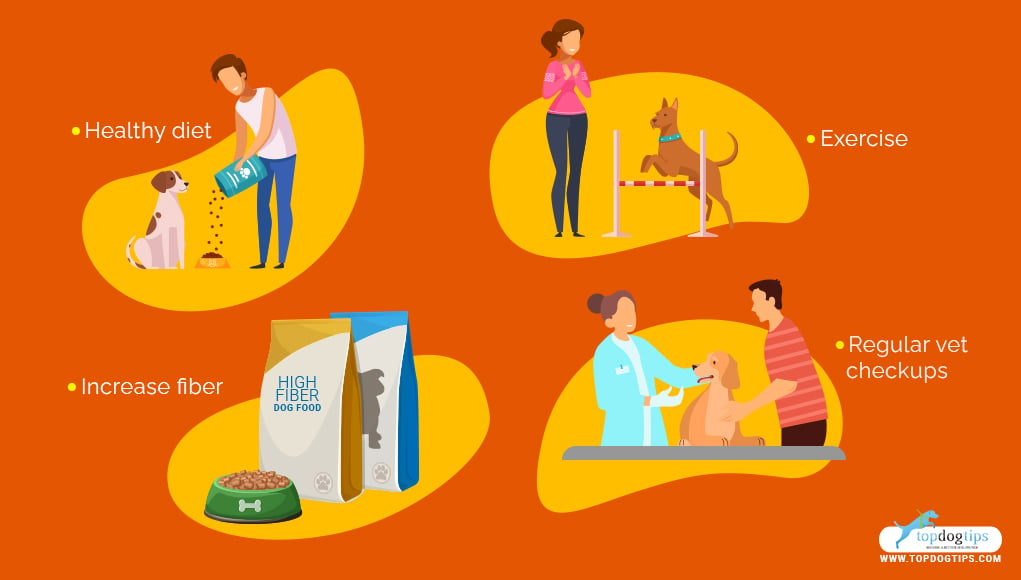Why Does My Dog Continue to Zcoot After Her Glands Have Been Attend to by Our Vet

W
hile dog anal gland problems are usually not life-threatening, they are relatively common, except for anal gland cancer. Sadly, when untreated, they can affect your dog's quality of life.
Not to confuse dog hemorrhoids, tumors, fissures, or rectal prolapse, dog anal glands issues occur specifically due to blockage of the ducts around the anus.
These ducts remove the excretions of anal glands via openings on either side of the anus.
What are Anal Glands?
Anal glands, or anal sacs, are found on both sides of a dog's anus, underneath his tail.
This pair of small glands are filled with oily fluid with a similar smell to the odor a skunk releases.
The exact purpose of the dog anal gland remains a matter of debate among experts.
However, it's theorized that they lubricate a dog's stool and disperse his unique scent to allow the dog to mark his territory.
Some also believe they contain pheromones, chemicals dogs use to communicate.
In fact, the scent from one dog's anal glands can reveal to other dogs some information about the animal, such as his health, sex, and approximate age.
ALSO READ: 12 Ways to Prevent and Treat Anal Glands in Dogs
5 Signs of Dog Anal Glands Problems

Anal glands usually drain naturally during a dog's bowel movement, but they can sometimes get impacted and clogged up.
This can lead to swelling and infection, or even abscesses. Here are the signs that your dog is having a problem with anal glands:
Scooting
This is usually the first sign.
When a dog's anal glands become impacted, he may feel pain and empty them by dragging his bottom along the ground.
If you notice that your dog is often scooting, it may signal a problem with his anal glands and needs to be looked into.
Biting and Licking His Rear
Another common symptom is biting and licking of the anus.
Your dog might do this to try and get the glands drained, or he might do it in sheer frustration.
He might also lick his paws for the same reason.
Some dogs even chase their tails when they feel uncomfortable or in pain.
Bad Odor
Since dog anal glands are responsible for canines' unique scent, this scent becomes too strong when they get impacted.
If you notice that your pup smells terrible even after you bathe him, then anal glands might be the reason.
Swelling and Redness
Impacted anal sacs can cause the area around the pet's anus to become swollen.
There can also be a change in color in that area since swelling can also cause redness, or in some extreme cases, dog anal glands can even turn purple.
Pets that suffer from chronic inflammation of anal glands can have hardened skin under the tail.
Abscesses and Drainage
If the problem of impacted anal glands is not addressed in the early stages, this can lead to infection.
Noticeable bulges can spot the dog anal gland infection just under the surface of the animal's anal opening and drainage from the rectum.
In more severe cases, abscesses may appear in the area.
Other Signs
Other potential signs of dog anal gland problems include bleeding in the anal region or straining to defecate.
You may also notice a smelly and greasy discharge, usually brown or tan.
Be on the lookout for indications of an infection.
These can include pus or red spots in the discharge, swelling, and a hole discharging green, yellow, or bloody pus by the anus.
Causes of Dog Anal Gland Issues
There are many potential causes of dog anal gland issues. Still, the most common one is the inflammation of the anal ducts .
Smaller breeds are more likely to suffer from this blockage because their anal sac ducts are smaller and more prone to blockage.

Breeds more susceptible to anal gland problems include Dachshunds, Chihuahuas, and Poodles.
Older dogs are also more likely to suffer from this issue.
If your dog has abnormal positioning of his anatomy, this can also cause anal gland issues.
Diarrhea is another common cause of anal glands because they're more likely to fill when the dog's stools are soft, and there is not enough pressure to empty the glands.
Similarly, constipation can lead to these problems because they lack stools to prevent emptying anal glands.
Allergies are also linked with dog anal gland problems since they can cause anal sac ducts to swell. So can eating low-quality food, including due to intolerances or allergies.
Bacterial, fungal, and parasitic skin infections can also be the cause, as well as hypothyroidism.
Changes to the consistency of your dog's bowels can also cause issues with the anal glands.

How to Prevent Anal Gland Problems?
Preventing anal gland problems is possible with a proper diet and exercise .
The highest dog anal gland issues risk is present in small, obese animals.
A healthy diet and exercise ensure less risk of digestive problems, especially diarrhea and constipation, thus ensuring the regular emptying of anal sacs.
If your dog suffers from these issues often, try to increase fiber in his diet to make his stools bulkier or switch to high-fiber foods .
Take your pup to regular vet checkups and ensure that your vet checks his perennial area for any signs of anal gland issues.

How to Treat Anal Gland Problems?
The treatment of the dog's anal gland will depend on the severity of the problem.
The immediate treatment for impacted anal glands entails emptying the glands manually by your veterinarian.
This is called dog anal gland expression , done by gently squeezing the liquid from the glands.
Your vet can show you how to express dog anal glands so you can do it yourself at home should they become impacted again.
In recurring or more persistent cases, adding a low dose of oral steroids may speed up recovery and reduce inflammation.
However, if the glands are not just impacted but infected, your veterinarian will first flush them out.
The vet will flush the glands with some softening solution or saline to remove the hardened material.
If abscesses are present, the vet will probably lance them and prescribe antibiotics for a week or two.
The lancing is performed under anesthesia due to pain when the vet opens and drains the abscesses .
After that, veterinarians will once again prescribe antibiotics, as well as anti-inflammatory drugs.

You can also add a daily warm compress to help alleviate any pain or swelling.
You may have to bring your dog back weekly to empty the sacs again until the problem is resolved.
In severe cases, your vet may suggest surgery if treatment doesn't work or if an anal gland tumor is present .
The vet will perform an anal sacculectomy to remove one or both of your dog's anal glands.
This simple procedure will resolve the problem permanently, but it may lead to fecal incontinence.
Answers to Common Questions about Dog Anal Gland Problems
The following should answer the most common questions about dog anal gland problems for those who prefer information in easily digestible chunks.
Anal Gland Expression: How Do You Know If Your Dog Needs It?
Some signs that your dog needs his glands squeezed include licking his bottom, scooting around on the carpet, or leaking either a brownish material or foul smell.
How Do You Treat Anal Gland Problems in Dogs?
Your vet will treat the dog's anal gland problems by draining the fluid from the glands. In the case of abscesses, they will open and drain them and give your dog anti-inflammatory drugs plus antibiotics.
How to Express a Dog's Anal Glands
To squeeze or express your dog's anal glands, put on gloves and apply lubricant to your index finger.
Put the index finger in your pup's anus with your thumb on the outside.
Bring these two fingers together, running them along the left side of the anus.
The anal glands should be at around the 4 and 8 o'clock positions.
Use a paper towel and your other hand to collect the fluid.
What Happens When a Dog's Glands Are Full?
If your dog's anal glands are too full, they can cause uncomfortable pressure.
This is when you are likely to notice signs of dog anal gland problems.
Can I Express My Dog's Glands Myself?
Yes, you can express them yourself. You will need gloves, paper towels, and lubricant.
Follow the above instructions for expressing or squeezing the glands.
Will the Anal Gland Issues Occur Again?
Although not always the case, your dog may have recurrent impactions or abscesses on his anal glands .
For example, overweight dogs are more likely to have issues due to their sacs not emptying as they should.
It is also important to note that the issue won't disappear until you eliminate the underlying cause.
Additionally, impaction can lead to scarring and narrowing of the anal ducts. This can increase the likelihood of future issues.
Sometimes, your vet may suggest surgically removing your dog's anal sacs.
Can Dogs Get Hemorrhoids?
For the most part, dogs don't get hemorrhoids. You probably won't live to see it happen to your pet/s
However, this doesn't exclude them from possible injuries in and around the anus.
Dogs can get hemorrhoids very rarely and it is a serious symptom that needs urgent medical attention.
If this is your dog, call your vet immediately.
Dog Anal Gland Problems: Final Thoughts
In conclusion, while dog anal gland issues don't threaten your pup's life, they can cause discomfort and pain.
Pay attention to signs like scooting, biting, and licking of the anus and any physical changes in the area around your dog's anal opening.
Feed your dog a healthy diet with enough fiber and exercise regularly to prevent potential anal gland problems.
READ NEXT: 5 Homemade Dog Food for Sensitive Stomach Recipes
Source: https://topdogtips.com/dog-anal-glands-problems/
0 Response to "Why Does My Dog Continue to Zcoot After Her Glands Have Been Attend to by Our Vet"
Post a Comment